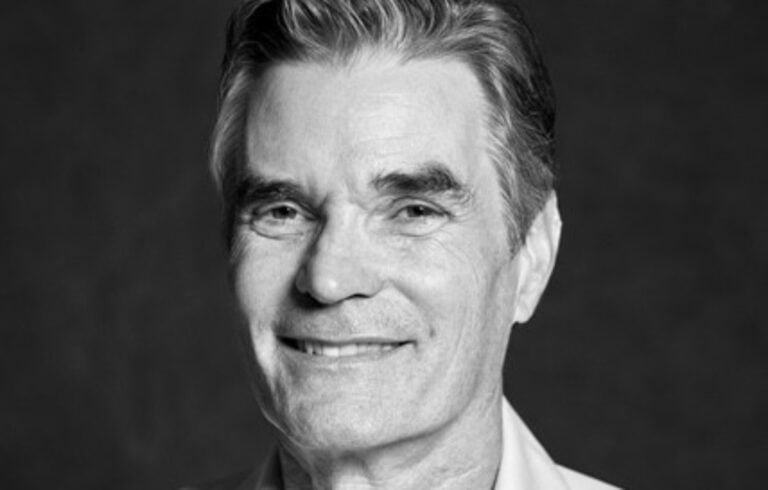
What does LA Angels pitching-hitting wunderkind Shohei Ohtani (AKA, Japan’s Babe Ruth) have in common with Norman Bodek, the Godfather of lean manufacturing in America? They’re both obsessed with The Harada Method, a systematic framework for “developing champions” through goal setting and self-reliance.
Bodek was the first to publish in English the works of Taiichi Ohno, father of the Toyota Production System and Dr. Shigeo Shingo, the world’s leading expert on TPS, helping introduce their revolutionary ideas into the United States. A co-creator of the Shingo Prize for manufacturing, Bodek spent his life delving into the secrets of quality and productivity in Japanese factories, publishing more than 100 Japanese management books in English, and visiting more than 250 facilities in Japan.
At 85, he is increasingly convinced that in an era of sub-4% unemployment, deepening workforce skills gaps and increasing automation, the next explosive revolution in manufacturing will come from bringing out the best in every single worker—and the way to do it is the Harada Method. “You pick a goal,” he says. “What do you want in your life, just the way Ohtani did.”
In early June 2018, Bodek taught the Harada Method to 200+ CEOs, with a focus on deploying it in manufacturing operations, at our Smart Manufacturing Summit in Columbus, Ohio. Chief Executive talked to Bodek about the Harada Method, and got an overview of the basics:
So tell us about the Harada Method and why it’s important for CEOs to understand it right now.
The Harada Method opens up people to their highest skills or their highest capability. The wonderful thing about the Harada Method is it focuses on self-reliance. People come and work in your company, and they have to do what they’re told to do, and they’re doing what they’re told to do because you’re paying them to bring out their best. But they’re not given the opportunity to be highly motivated. They’re doing what you want instead of what they want.
Now the challenge is, can people do what they want to grow, and it satisfies them and satisfies you at the same time? And that’s what the Harada Method does.
How does it do that?
It builds champions. Takashi Harada was a track-and-field coach at the worst school in Osaka. Out of 380 schools, his school was rated the lowest, if rated at all. But he decided he wanted to make champions out of them. So he studied the world’s best. He went to Steve Covey. He studied John Wooden. He studied the greatest people in Japan. And he came up with this methodology, and once he got it crystallized and he was able to begin to apply it, 12 students got 13 got gold medals, from the worst school. That gold medal meant that that student was the best athlete, not just in Osaka, but in all of Japan.
Shohei Ohtani subscribes to the Harada Method, right?
Yes. He was a student of Harada when he was in high school, when he was a sophomore in high school, and he picks a goal. His goal was to pitch at 99 miles an hour and to be entered into the Major Leagues in Japan.
Well, three years later, he was the number one student pick for the Major Leagues in Japan. Three years later, he became the best pitcher, pitched not only at 99 miles an hour, pitched over 101 miles an hour, broke a new record in Japan. So he was a great pitcher, number one, but unusually, he also is a great hitter. He was actually the best pitcher and the best hitter in Japan in the last three years. [He joined the Angels in December, 2017. As of May 2018 he’s batting .344 with four home runs and 14 RBIs, with an ERA of 4.1 on the mound in the five games he’s pitched.]
So how do you begin?
The basic version is this: You pick a goal. What do you want in your life, just the way Ohtani did.
Then we have a very clever matrix, which is, “What is the value to you? What is the purpose to you?” And we want to people to write out at least 40 of these values in a matrix.
One quadrant is: “What’s good for you materially?” Materially. I wanna make a lot of money. I wanna get a Cadillac. I want a new house, etc.
Another quadrant is, “What’s good for you immaterially, intangibly?” I wanna feel better, etc.
The other quadrant is: “Materially, what is good for other people?” What’s good for your family? What’s good for your community? What’s good for your company? What’s good for the society in a tangible way.
The last quadrant is what’s good for society in an intangible way?
The more of these you write, the higher the motivation for you because you, as an individual, know exactly what you want now. What are you trying to achieve? You see clearly a goal in front of you.
What are the basic steps from there?
THE 33 WORDS. One, I have what’s called 33 words. Given just 33 words, you [describe your abilities]. You know, how creative are you? How adaptable are you? Thirty-three words. And I have people evaluate their level of confidence on a score of one to ten. And then if anything is less than ten, I want them to come up with a task. I want them to come up with a routine. What can you do, specifically, not generally [to improve on this]? You know what I mean? Like, “I can take out the clothes every night.” Or “I’ll take a specific course in whatever it is to move me up on the level of confidence.” That’s number one.
LONG-TERM GOALS. Number two, we have what’s called the long-term goal setting sheet. And this sheet is a brilliant document that Harada puts together where you put your goal, you put the reasons for your goal, the values for you, the purposes of your goal. You then evaluate yourself at a new level, where you look at your past successes, you look at your past failures, you look at the obstacles that stand in front of you to attain that goal, and you come up with the solutions necessary to attain that goal.
THE 64 CHART. Then we have another form, it’s called the 64 chart. On the 64 chart, you will write down 64 specific tasks or routines that you have to do to attain your goal, and you do it. In our course, it only takes 33 minutes for you to write out 64. It’s amazing the way this pours out of you, 64 specific tasks. Then you must put a date. You must put a date when you wanna get started on that task. Without a date, then it just never, never lands. You put a date. Then you pick ten. You pick ten to get started, ten routines and ten tasks.
THE DAILY DIARY. Then we have another wonderful form called the daily diary, and the daily diary is every day, you have something very similar. Now your calendar, etc., but Harada’s daily diary is wonderful because what it is it accomplishes something called plan, do, check, act. Plan, do, check, act. I’m gonna plan what I’m gonna today specifically. I’m gonna take at least one task from my 64-chart and put it on my daily diary. I’m gonna put 10:00 o’clock in the morning, I’m gonna do this task. And then I do it. Then I evaluate. I check, “Did I do it?” I reflect, “Did I do it?” Then I put there, “What did I learn from this?”
GET A COACH. One of the key things is you need a coach, just like you have a coach. You’ve got to get this system, and it doesn’t cost you anything. It costs, what, 10 minutes a day to have somebody in your company become a coach to somebody else, to make sure that they stay on the path for their personal greatness and for the greatness of the company they’re a part of.
COACHING ROUTINE. Then I meet with my coach and ask a question of my coach. This takes maybe only 10 minutes a day. I visited Shiba Pharmaceuticals, in Japan. Every worker, every new worker gets a coach. This new worker, presented to us in this meeting, she wants to be a great worker in the company. That’s her goal. She really wants to become a great worker. She wants to know how to do it in one year, and then she’s given a coach, and she fills out the daily diary every day. She presents it to her coach, and the coach gives her only positive feedback. No negatives. No criticism. We don’t need that. Only positive feedback. The coach is there to help her do what she wants to do.
This is what the Harada Method does. It is so powerful to teach you to look at your habits, and then begin to change, and you lead, you lead what you think you have to do to become great in your life. And when you become great, other people become great.
Everybody wants a great company. Believe me, everybody wants to be part of a great company. You just give them the opportunity to do it.




0

1:00 - 5:00 pm
Over 70% of Executives Surveyed Agree: Many Strategic Planning Efforts Lack Systematic Approach Tips for Enhancing Your Strategic Planning Process
Executives expressed frustration with their current strategic planning process. Issues include:
Steve Rutan and Denise Harrison have put together an afternoon workshop that will provide the tools you need to address these concerns. They have worked with hundreds of executives to develop a systematic approach that will enable your team to make better decisions during strategic planning. Steve and Denise will walk you through exercises for prioritizing your lists and steps that will reset and reinvigorate your process. This will be a hands-on workshop that will enable you to think about your business as you use the tools that are being presented. If you are ready for a Strategic Planning tune-up, select this workshop in your registration form. The additional fee of $695 will be added to your total.

2:00 - 5:00 pm
Female leaders face the same issues all leaders do, but they often face additional challenges too. In this peer session, we will facilitate a discussion of best practices and how to overcome common barriers to help women leaders be more effective within and outside their organizations.
Limited space available.

10:30 - 5:00 pm
General’s Retreat at Hermitage Golf Course
Sponsored by UBS
General’s Retreat, built in 1986 with architect Gary Roger Baird, has been voted the “Best Golf Course in Nashville” and is a “must play” when visiting the Nashville, Tennessee area. With the beautiful setting along the Cumberland River, golfers of all capabilities will thoroughly enjoy the golf, scenery and hospitality.
The golf outing fee includes transportation to and from the hotel, greens/cart fees, use of practice facilities, and boxed lunch. The bus will leave the hotel at 10:30 am for a noon shotgun start and return to the hotel after the cocktail reception following the completion of the round.